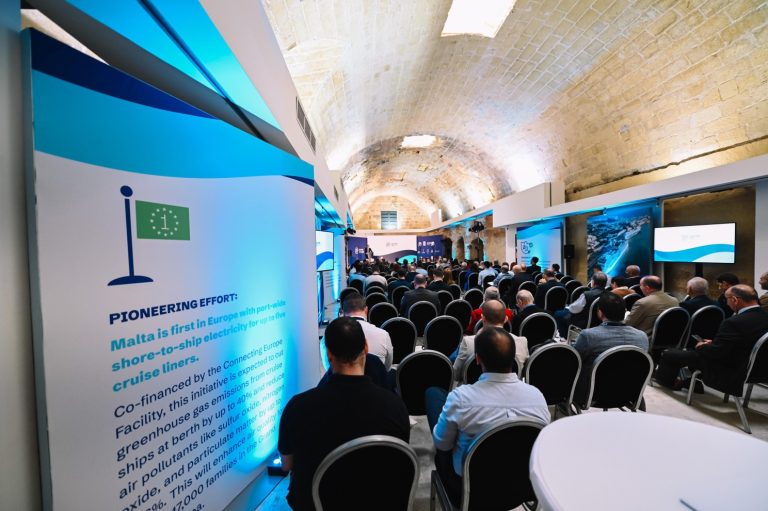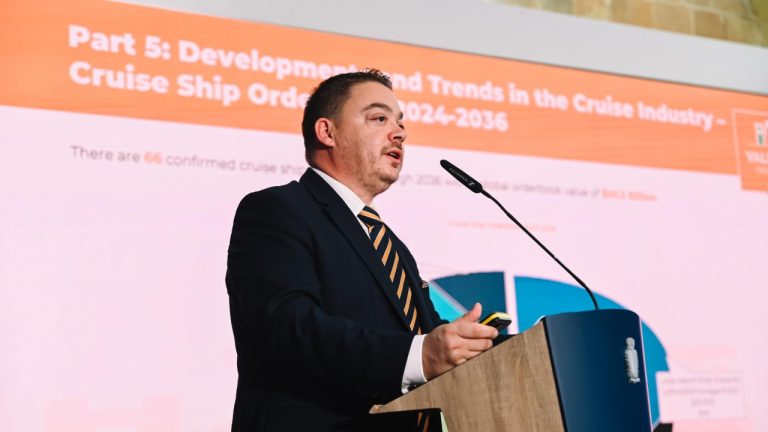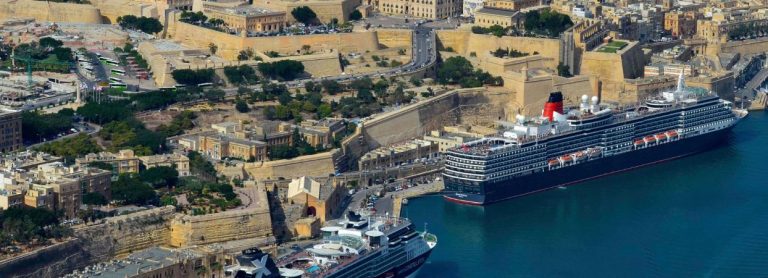Valletta Cruise Port: Shore-to-Ship Technology
The growing focus on sustainability and reducing greenhouse gas emissions has driven the maritime sector to seek innovative solutions for more eco-friendly port operations. In this context, the recent “Decarbonising the Future Shore to Ship Leadership” conference, held at the Magazino Hall of Valletta Cruise Port plc, served as a key milestone for the future of sustainable cruise tourism.
As part of Malta’s strong commitment to sustainability, the Grand Harbour Clean Air Project has introduced state-of-the-art shore-to-ship power technology. This system allows cruise ships to switch off their diesel engines while docked, drawing power directly from the national grid. This solution not only significantly reduces greenhouse gas emissions and air pollutants but also improves air quality and energy efficiency in ports.
Decarbonising the Future Shore to Ship Leadership (2)
Malta stands out as the first European country to implement shore-to-ship electricity for up to five cruise ships simultaneously, positioning itself as a pioneer in the sector. With this milestone, Malta’s Grand Harbour is set to become a model of sustainability, establishing new standards for greener port operations and contributing to international climate goals.
Mark Cauchi Garzia, Deputy General Manager and Head of Operations and Projects at Valletta Cruise Port, highlighted the importance of this initiative as part of a global strategy to reduce cruise industry emissions. As part of Global Ports Holding, one of the world’s largest cruise port operators, Valletta Cruise Port was the first in the Mediterranean to adopt shore power for the entire port area.
Decarbonising the Future Shore to Ship Leadership (2)
Cauchi Garzia emphasized that the shore-to-ship power project aligns perfectly with international policies for emission reduction, including the IMO 2023 Strategy on cutting greenhouse gas emissions. He also underlined that the collaboration between all stakeholders, including local authorities, maritime operators, and energy providers, has been crucial to the project’s success. Communication, cooperation, and training remain essential to ensuring continuous improvement in operations and addressing challenges related to the implementation of similar solutions.
The introduction of shore-to-ship technology at Valletta Cruise Port is just the first step toward a future where port operations are increasingly sustainable. The ability to supply ships with clean energy while docked reduces the environmental footprint of cruise travel, positioning Malta as a Mediterranean leader in the transition towards a decarbonized maritime industry.
With the growing demand for sustainable solutions from the cruise market and port authorities, the adoption of such technologies is becoming essential. The challenge ahead will be ensuring that this innovation can be replicated in ports worldwide, through the continued development of technologies and operational practices that support more responsible and environmentally friendly tourism.
Valletta Cruise Port
The shore-to-ship project in Valletta is not just a response to environmental challenges but a tangible example of how technological innovation and cross-sector collaboration can drive a more sustainable future for the cruise industry. The adoption of these technologies is now essential for all industry operators, as the global cruise landscape shifts towards zero-emission targets and increasingly eco-friendly operations. Malta’s commitment sends a positive signal to the entire sector, reaffirming the importance of transitioning to greener and more responsible solutions.
Stay up to date with news, updates, and cruise reviews on Cruising Journal.



